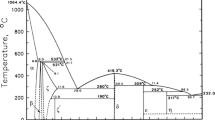Abstract
This paper describes low-temperature bonding realized by squeegee-embedded Au nanoporous bumps that were activated by vacuum ultraviolet in the presence of oxygen (VUV/O3). The VUV/O3 technology is confirmed to be a suitable surface treatment technique for Au nanoporous bump bonding because it maintains the highly reactive surface of the Au nanoporous bumps during the treatment. X-ray photoelectron spectroscopy confirmed that the VUV/O3 treatment was capable of removing organic contamination on the nanoporous surface, and scanning electron microscopy images showed that the ligament size of the nanoporous bumps stayed the same. After bonding, the ligament size of the VUV/O3-treated nanoporous structure grew to 54 nm compared with 27 nm for the untreated samples. This increase in ligament size was attributed to the improvement in nanoporous coalescence by removing organic contamination that obstructed Au atom diffusion. Furthermore, the highest strength of the VUV/O3-treated samples reached 8.9 MPa at a low temperature of 200°C, which was three times higher than that of the untreated sample. This technology is expected to assist manufacturing of future 3-D integrations.
Similar content being viewed by others
References
K. Sakuma, P.S. Andry, C.K. Tsang, S.L. Wright, B. Dang, C.S. Patel, B.C. Webb, J. Maria, E.J. Sprogis, S.K. Kang, R.J. Polastre, R.R. Horton, and J.U. Knickerbocker, IBM J. Res. Dev. 52, 611 (2008).
E. Higurashi, T. Imamura, T. Suga, and R. Sawada, IEEE Photon. Technol. Lett. 19, 1994 (2007).
H.A.C. Tilmans, M.D.J. Van De Peer, and E. Beyne, J. Microelectromech. Syst. 9, 206 (2000).
M.J. Wolf, G. Engelmann, L. Dietrich, and H. Reichl, Nucl. Instrum. Methods Phys. Res. Sect. A 565, 290 (2006).
C.T. Ko and K.N. Chen, Microelectron. Reliab. 52, 302 (2012).
J.W. Jang, L. Li, P. Bowles, R. Bonda, and D.R. Frear, Microelectron. Reliab. 52, 455 (2012).
H. Alarifi, A. Hu, M. Yavuz, and Y.N. Zhou, J. Electron. Mater. 40, 1394 (2011).
K. Suganuma, S. Sakamoto, N. Kagami, D. Wakuda, K.S. Kim, and M. Nogi, Microelectron. Reliab. 52, 375 (2012).
W. Fu, M. Nimura, T. Kasahara, H. Mimatsu, A. Okada, S. Shoji, S. Ishizuka, and J. Mizuno, J. Electron. Mater. 44, 4646 (2015).
P.I. Wang, S.H. Lee, T.C. Parker, M.D. Frey, T. Karabacak, J.Q. Lu, and T.M. Lu, Electrochem. Solid-State Lett. 12, H138 (2009).
H. Oppermann and L. Dietrich, Microelectron. Reliab. 52, 356 (2012).
W.S. Wang, Y.C. Lin, T. Gessner, and M. Esashi, Jpn. J. Appl. Phys. 54, Art. No. 030215 (2015).
H. Mimatsu, J. Mizuno, T. Kasahara, M. Saito, H. Nishikawa, and S. Shoji, Jpn. J. Appl. Phys. 52, Art. No. 050204 (2013).
K. Matsunaga, M.S. Kim, H. Nishikawa, M. Saito, and J. Mizuno, in ICEP-IAAC Conference Proceedings, pp. 830–833 (2015).
H. Mimatsu, J. Mizuno, T. Kasahara, M. Saito, S. Shoji, and H. Nishikawa, in MEMS Conference Proceedings pp. 1131–1134 (2014).
T. Kaneda, J. Mizuno, A. Okada, K. Matsunaga, S. Shoji, M. Saito, and H. Nishikawa, in ICEP-IAAC Conference Proceedings, pp. 473–477 (2015).
J. Erlebacher, M.J. Aziz, A. Karma, N. Dimitrov, and K. Sieradzki, Nature 410, 450 (2001).
Y.H. Tan, J.A. Davis, K. Fujikawa, N.V. Ganesh, A.V. Demchenko, and K.J. Stine, J. Mater. Chem. 22, 6733 (2012).
E. Higurashi, D. Chino, T. Suga, and R. Sawada, IEEE J. Sel. Top. Quantum Electron. 15, 1500 (2009).
A. Shigetou, T. Itoh, and T. Suga, J. Mater. Sci. 40, 3149 (2005).
K. Sakuma, J. Mizuno, N. Nagai, N. Unami, S. Shoji, and I.E.E.E. Trans, Electron. Packag. Manuf. 33, 212 (2010).
N. Unami, K. Sakuma, J. Mizuno, and S. Shoji, Jpn. J. Appl. Phys. 49, 06GN121 (2010).
A. Okada, S. Shoji, M. Nimura, A. Shigetou, K. Sakuma, and J. Mizuno, Mater. Trans. 54, 2139 (2013).
Acknowledgements
This work is partly supported by Japan Ministry of Education, Culture, Sports Science and Technology (MEXT) Grant-in-Aid for Scientific Basic Research (A) No. 16H02349 and Scientific Basic Research (B) No. 25289841. The authors thank the MEXT Nanotechnology Platform Support Project of Waseda University. The author W. Fu also acknowledges the Leading Graduate Program in Science and Engineering, Waseda University from MEXT, Japan.
Author information
Authors and Affiliations
Corresponding author
Rights and permissions
About this article
Cite this article
Fu, W., Kaneda, T., Okada, A. et al. Low Temperature Flip Chip Bonding Using Squeegee-Embedded Au Nanoporous Bump Activated by VUV/O3 Treatment. J. Electron. Mater. 47, 5952–5958 (2018). https://doi.org/10.1007/s11664-018-6462-8
Received:
Accepted:
Published:
Issue Date:
DOI: https://doi.org/10.1007/s11664-018-6462-8




